I will forever have a soft spot for the Galaxy Flip. It’s the device that made me believe that foldables could, indeed, be a viable path forward for the smartphone industry. Respect to the Fold for the tough path it blazed to become the first commercially viable entry, but the Flip flipped the script, as it were, demonstrating that foldables need not be bulky nor prohibitively expensive.
It’s the kind of device that makes one lament the fact that we abandoned the clamshell as a society. It’s a nice looking device that snaps shut and sits comfortably in your pocket. The form factor — like everything in consumer electronics — is a trade-off. The Fold is built around the concept of carrying a tablet around in your pocket, opening up to reveal a 7.6-inch display.
At 6.7 inches, the Flip’s main display is well within the acceptable phablet realm. In fact, it’s actually 0.1 inches smaller than the Galaxy S23 Ultra. But it’s infinitely more portable than both. This particular design does, however, come with the caveat of a bizarre 22:9 aspect ratio. You’re just not going to get something more standardized without making the device substantially wider. It’s generally not an issue, so long as you’re cool dealing with some pillarboxing when watching videos.
With a bit of distance, it always dawns on me how silly it is to call a $1,000 phone affordable. It’s a lot of money for most of us, and prior to the iPhone X’s debut, the notion of dipping into four digits for a handset was downright absurd. That, of course, was years before the Galaxy Fold arrived at a hair under $2,000. Scaling has brought the price down a bit, but the latest version will still run you $1,800.
That’s a hard pill to swallow in a world where economic headwinds have hampered already slowing global smartphone sales. Every day people have trouble stomaching the idea of paying half that for a phone. Components are to blame. More sales = more production = a lower per unit price, so there’s a decent chance they’ll continue to lower in price — especially as the company supplies screens to the competition.
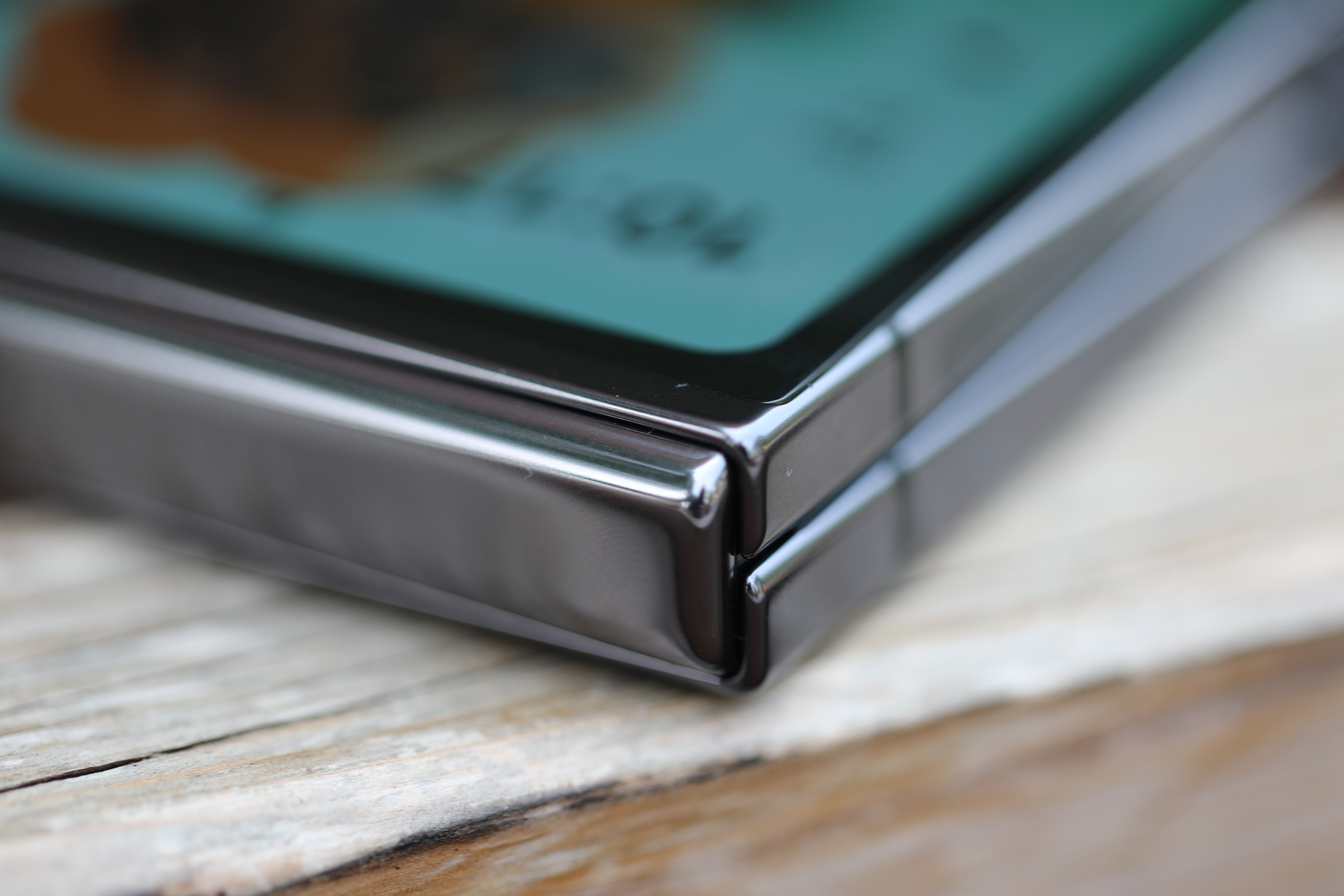
As an aside, a 2022 teardown by Nikkei put the Galaxy Z Fold 4’s per unit cost at $670 — or less than 40% of its sale price. One suspects that Samsung charges as much as it does simply because it can. But more competition should also have the effect of bringing prices down across the board. With these sorts of figures in mind, the $1,000 Flip appears attainable by comparison. Certainly, it’s a far lower barrier of entry for those interested in trying the foldable lifestyle on for size.
I asked Samsung for a sales breakdown between their two foldable lines, but it didn’t offer specific numbers. That’s not surprising — few consumer electronics companies provide that level of information. Samsung instead deals in milestones. We rely on analysts for more specific figures. Canalys, for instance, put the company’s total foldable shipments at 11 million in 2022. We also know that the company continues to dominate the form factor globally — though a couple of companies are beating it out in China. It is, after all, a notoriously difficult market for foreign phone makers.
The Samsung spokesperson I put the question to initially suggested that the Fold and Flip are in a dead heat, but ultimately conceded that the Flip has an edge. Honestly, I get the sense that this came as a genuine surprise for the company early on. As an objective third party, however, it’s a no brainer. The Flip is the more accessible device by most metrics.
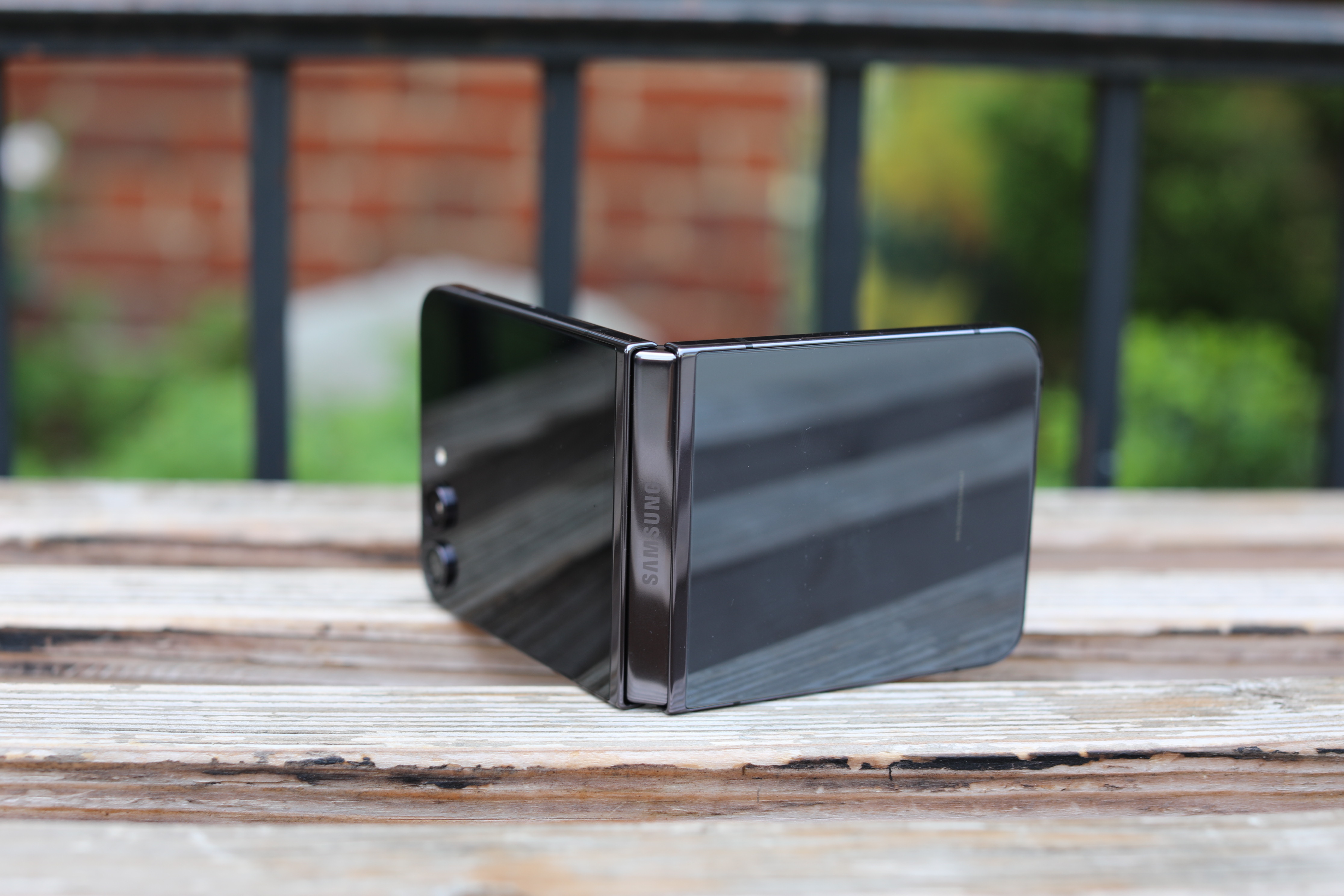
For me, the Flip takes yet another step ahead of the Fold as Samsung addresses the line’s biggest (smallest?) shortcoming. When the product launched in the now-hazy liminal zone known as February 2020, it arrived with a 1.1-inch external display. The Fold, too, had a fairly limited front screen that it eventually increased to something nearly edge to edge, but there was always at least enough space to do something of use. The original Fold’s was little more than a glorified calculator screen.
Things have slowly gotten better. There was no Flip 2 — Samsung did a roadmap shift, aligning the Fold and Flip launches as their secondary flagship devices. The company figured a misalignment in numbers would have been annoying, so we went straight from the Flip to Flip 3. Not a huge thing — keep in mind this is the same company that went straight from the Galaxy S10 to S20 to match the year it was announced.
The Flip 3 offered a slight external display size increase to 1.9 inches, while the Flip 4 maintained that size. The Flip 5, on the other hand, takes a (relatively) big step forward with a 3.4-inch screen. That might not sound like a lot — because it isn’t — but we’ve finally entered the realm of usability. Keep in mind, when I use the u-word here, I’m not suggesting it can replace the primary screen in any sort of meaningful way. Both the Flip and Fold’s external screen real estate is hindered by the limitation of their hardware footprint — and making the Fold any larger stretches the bounds of its portability claim.

The new, larger screen is, in effect, a widget machine. Tap the screen and you get a simple, monochromatic presentation of basic information: the time, date and number of unread notifications. Hit the power button and it fully turns on to display your lock screen wallpaper (I’m a bit enamored of the dachshund that looks like it’s cosplaying Velma from Scooby-Doo, as shown at the top of this post). Swipe through and you get widgets. There are currently a dozen selections, including basics like calendar, weather, alarm and fitness (specifically steps taken).
Hopefully if Samsung continues to sell enough of these things (again, it’s currently selling better than the Fold), we’ll see more interesting and innovative uses for the display. I don’t hate the idea of a simple game to pass the time — heck, Google’s had that offline dinosaur side scroller for nearly a decade. You can also use the screen for selfies when closed — probably some of the best ones you’ve taken, given that these are main cameras. That image is Portrait mode by default. Swiping right toggles between a standard image and video.
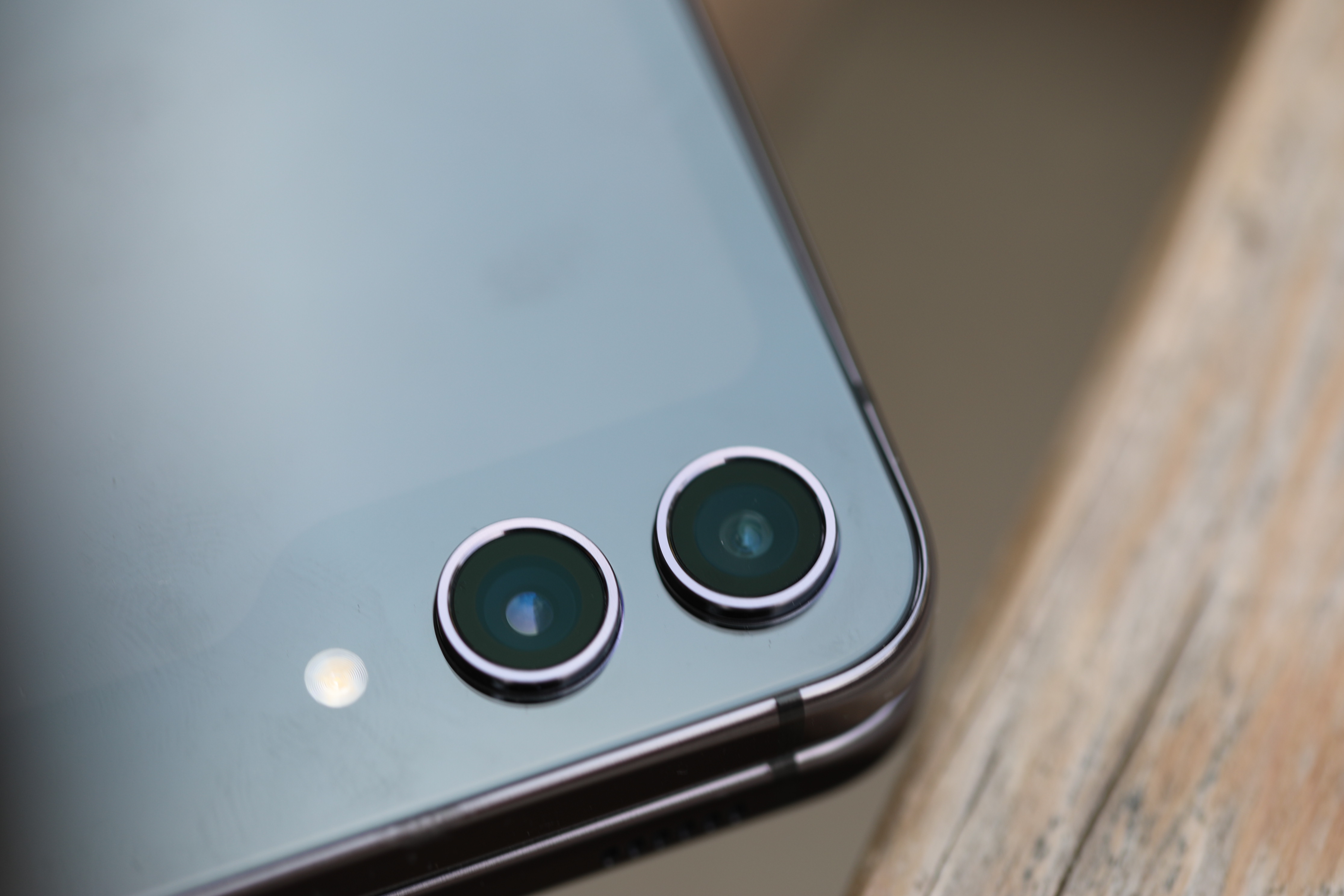
The new display isn’t exactly edge to edge, and it’s a bit of an odd shape, owing to a cutout for the cameras, but it’s hard to imagine a small size increase adding much more functionality. One anticipates that a full external display is coming in a generation or two, but this is one place where the new Motorola Razr absolutely has the Flip beat. The 3.6-inch Moto screen only beats the Flip by two-tenths of an inch, but the true edge to edge looks significantly better, owing to the 1056 x 1066 res to Samsung’s 720 x 748.
There is, of course, infinitely more to be done with that 6.7-inch, 2640 x 1080 primary screen. The screen looks great, and the colors pop — in fact, sometimes the colors are so intense the images you shoot on the camera have a tendency not to look as good when you view them elsewhere.
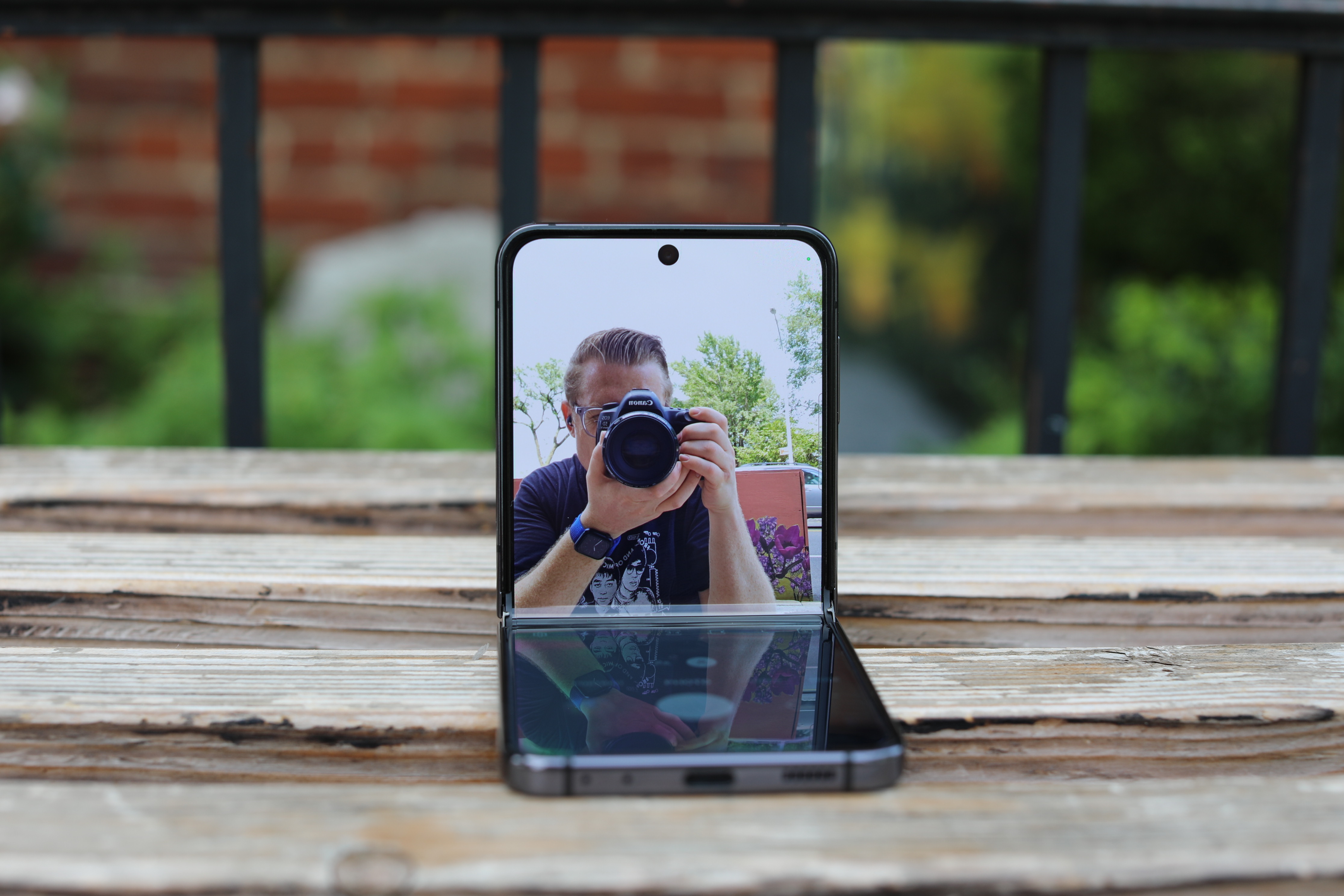
The primary display is effectively the same as last year. I’ve always appreciated how the form factor allows you to bend it into an L-shape for image capture, with the phone effectively serving as its own stand. At a 45-degree angle, meanwhile, the screen can be propped on its side for video watching. This is what made me appreciate the form factor in the first place: taking a long walk, stopping for dinner and pulling the phone out to watch a baseball game. Delightful.
The two biggest issues with it are: 1) The aforementioned awkward aspect ratio and 2) The crease. Any time I write about a foldable, I get comments on the latter. And listen, I totally get it. The best crease is no crease at all. I suspect that at some point, display designers will crack the crease, but for now, we’re stuck with it. However, the thing foldable enthusiasts tell you is true — you mostly don’t notice it after a while. Granted, you can feel it when you swipe up and you’ll definitely see it when the light hits it right, but it doesn’t really inhibit your day-to-day usage.
One other thing bears mentioning on the screen front — something to look out for, really. Both the Fold and Flip 5 sport the new Flex Hinge, which virtually eliminates the gap between the screen when closed. That’s nice from an aesthetic standpoint and also makes for a thinner device when folded, reducing it from 0.67- to 0.59 inches. When it comes to carrying it around in your pocket, fractions of an inch do, indeed, count. Google also prized the thinness its proprietary hinge affords the Pixel fold, but ultimately that device has run into reports of display issues.
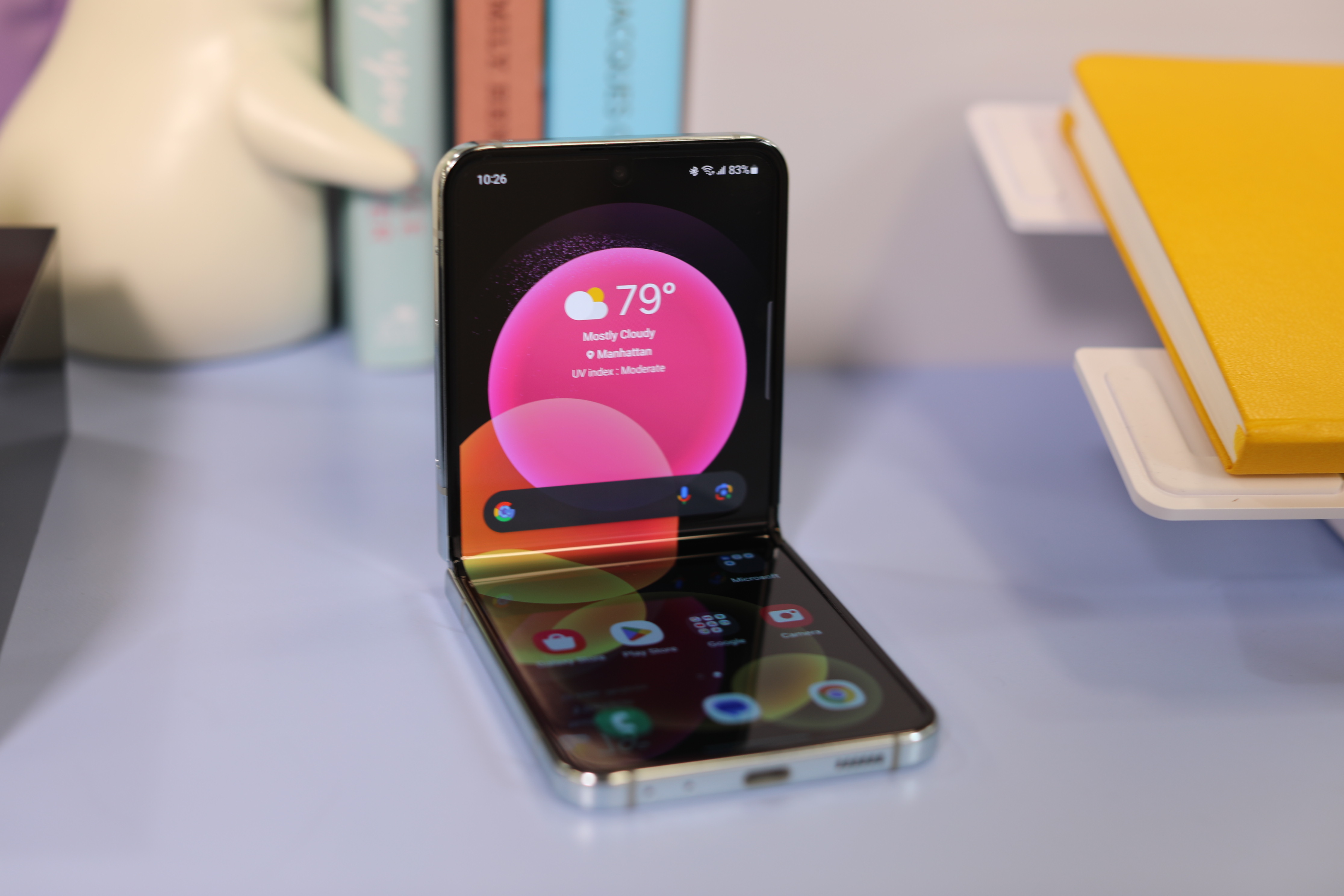
Quoting from myself here:
Of course, it’s worth noting that Google has since run into its own display issues with its first foldable. Some have suggested that the issue is a direct result of having two displays that effectively lie flush, allowing debris to get trapped between and damaging the screen in the process. Given the newer, flatter version of the Galaxy Fold, I asked the company about this potential issue, and they cited the inclusion of bumpers as a protection against this potential issue. As always, the real test comes when the device is launched.
Again, something to keep an eye on.
Beyond screen size/form factor (and price tag), the camera array is the biggest distinguishing factor between the two devices. The Flip features a two-camera array (12-megapixel main, 12-megapixel ultrawide) to the Fold’s three (50-megapixel wide angle main, 12-megapixel ultrawide, 10-megapixel tele). It’s the same hardware as the Flip 4, with any real improvement arriving by way of the new(ish) chipset’s Image Signal Processing (ISP). Most mobile photography is computational these days, and that’s going to be increasingly the case.
Samsung’s camera software has also become extremely robust and good. I’m happy with the outdoor images I shot, though the camera struggled a bit when I shot photos at the recent Le Tigre and Nuggets anniversary shows. Admittedly, the dark, mixed color palette and distance are an especially challenging combination. Paying $1,000 should get you access to Samsung’s best camera array, though this is a key place where it can distinguish the Flip from the $1,800 Fold. The Flip 5 is plenty of camera for most situations, though things like optical zoom make a big difference — one that’s plain as day when switching between the two as I’ve been doing the past week.
Both systems sport the same Snapdragon 8 Gen 2 Platform for Galaxy found on this year’s Galaxy S23. The name is a mouthful, but it’s effectively a version of Qualcomm’s 2023 flagship tweaked for Samsung devices. The chip delivers some slight performance enhancements over the vanilla same Snapdragon 8 Gen 2, but not really anything you’d pick up on, day to day. The biggest advantages are the imaging improvements and power optimization that squeezes a bit more life out of the 3,700mAh battery (compared to the Fold’s 4,400mAh).
The actual battery size is the same as what you’ll find on the Flip 4, but you’ll get a bit more life here. You should get through a full day without issue, but I wouldn’t push it any further than that. While the body is long, the battery has to be segmented to accommodate the fold. That means that, while the screen is roughly the same size as, say the Galaxy S23 Ultra, the combined batteries are significantly less than its 5,000mAh — or for that matter, the smaller S23’s 3,900 mAh.
The Flip 5 sports 8GB of RAM and doubles the default storage from 128 to 256GB. Upgrading to 512GB will bump the price up to $1,200, though Samsung is currently offering a free upgrade for a limited time. That’s a nice perk. The system features the same IPX8 water-resistance rating as its predecessor. There’s still no dust rating, likely owing to the inclusion of a hinge.
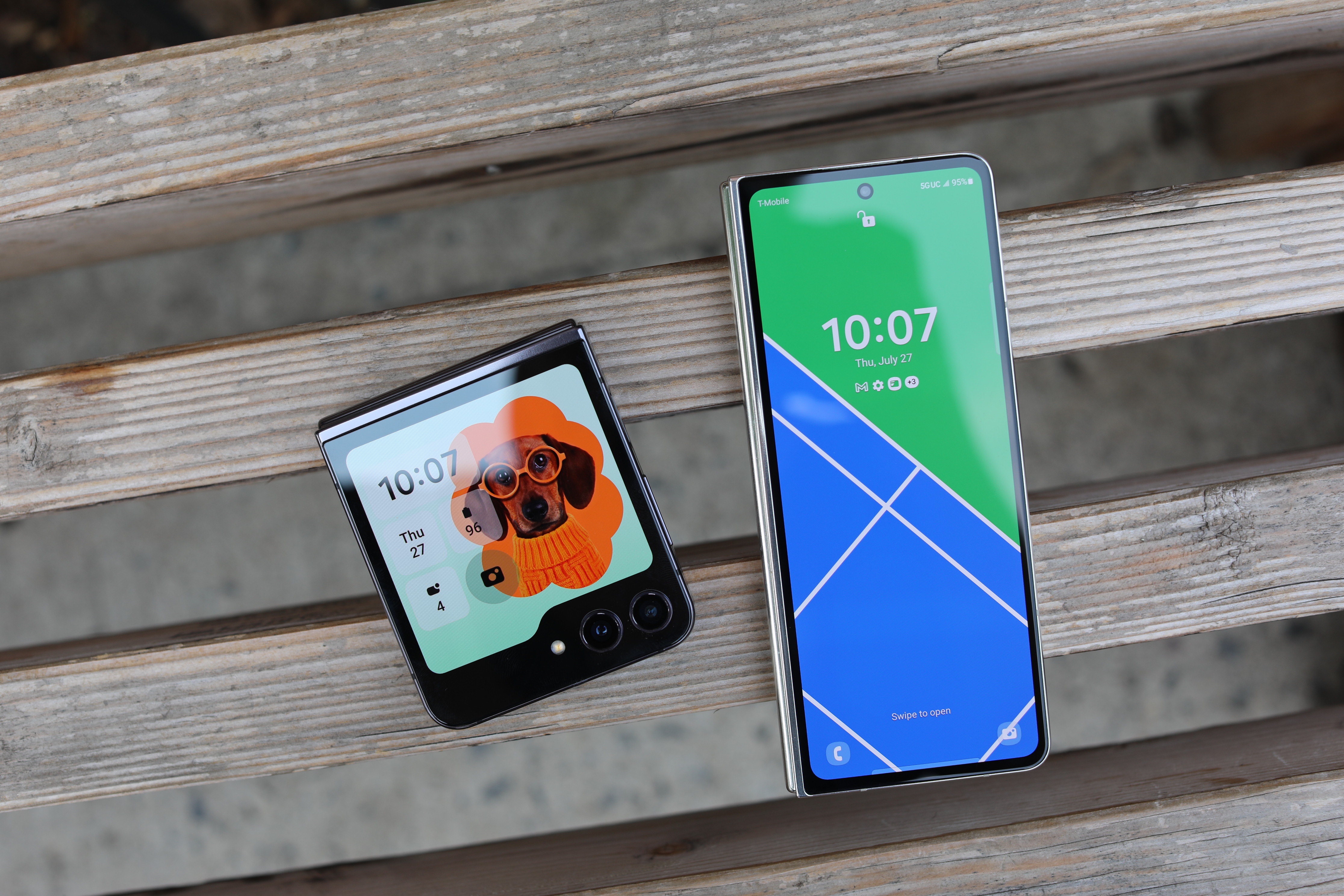
It’s safe to say the Flip 5 doesn’t offer a huge upgrade from its predecessor. In fact, you probably don’t need to trade up if you’ve bought any of the last few Flips. The larger external screen is a nice addition — though its impact is lessened by the Motorola Razr+. That really gets to the heart of Samsung’s current foldables positioning. The company effectively created the category and it’s continued to dominate market share — but suddenly things are a lot more competitive.
The Flip continues to be one of my favorite foldables, and no one can blame the company for largely sticking to its guns here, but remaining competitive in the future may require a renewed look at the emerging landscape.











































Comment